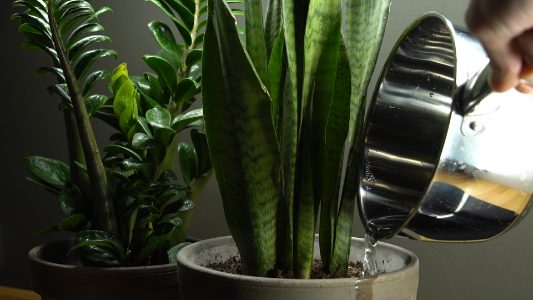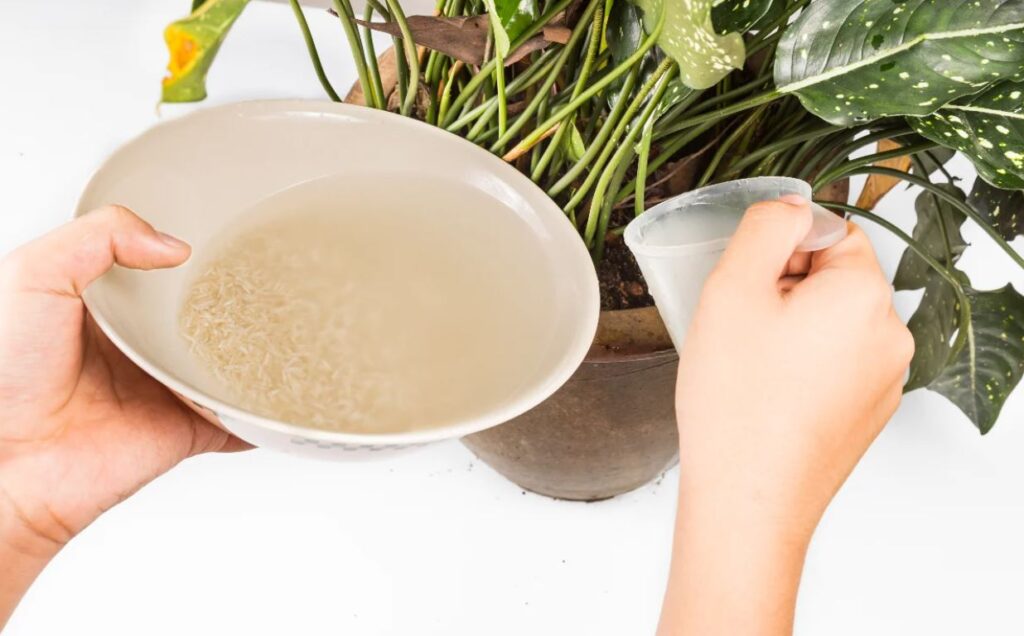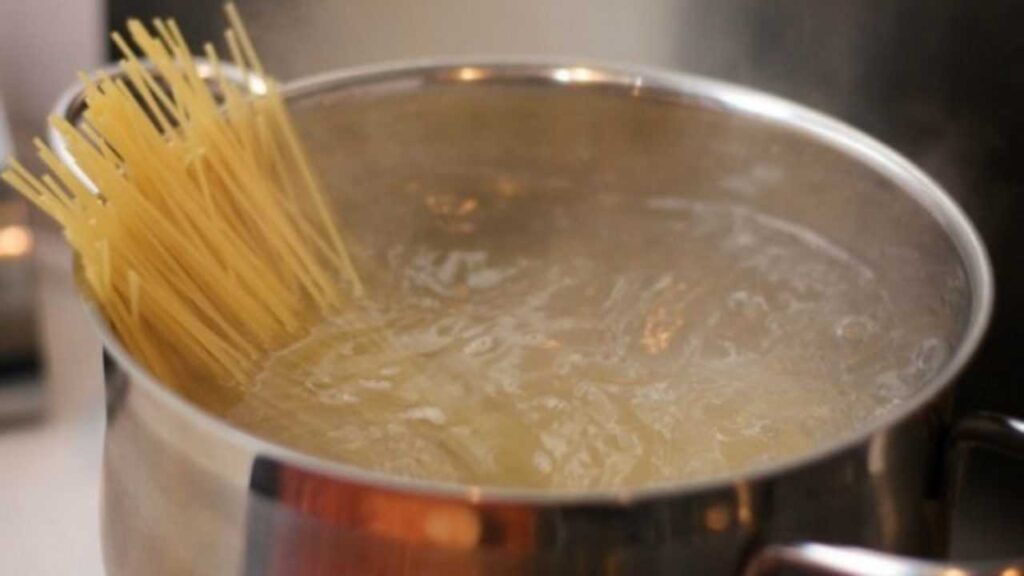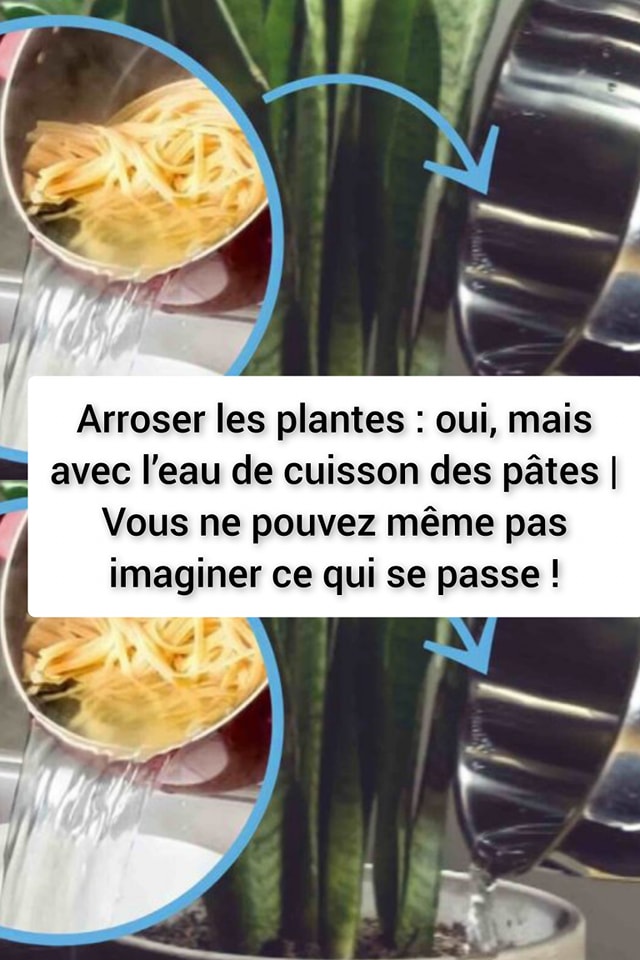Did you know that pasta cooking water, often considered waste, can be used to water your plants? This ecological and economical tip is gaining popularity among amateur and experienced gardeners. In this article, we'll explore the benefits of this practice for your plants as well as other surprising uses for this nutrient-rich water.
ADVERTISEMENT
There are many benefits to using pasta cooking water to water plants. Not only does it reduce water waste, but it also provides a source of beneficial nutrients for the growth and health of your plants. Discover how this simple habit can transform your garden and your daily routine.
The water you cook your pasta in is full of vitamins and minerals essential for plant growth. When cooking, pasta releases starch, which enriches the water with carbohydrates. This water also contains calcium, iron, phosphorus, potassium and zinc, key nutrients for plant development.
ADVERTISEMENT

These nutrients play a crucial role in plant health. Calcium strengthens cell walls and promotes root growth. Iron is essential for the production of chlorophyll, responsible for the green coloring of leaves. Phosphorus stimulates flowering and fruiting, while potassium improves plant resistance to disease and stress.
ADVERTISEMENT
In addition to these minerals, the starch and carbohydrates found in pasta cooking water are beneficial to the soil. They feed the microorganisms that maintain a healthy and balanced ecosystem around the roots. This increased microbial activity improves soil structure and promotes nutrient uptake by plants.
Regularly using pasta cooking water to water your plants can have remarkable effects on their growth and appearance. You will quickly notice that the foliage becomes more luxuriant and displays a vibrant green color. This water acts as a natural fertilizer, providing plants with the nutrients they need to grow optimally.
ADVERTISEMENT
In addition to promoting the growth of aerial parts, pasta cooking water stimulates microbial activity in the soil. Beneficial bacteria and fungi, such as mycorrhizae, multiply more quickly with carbohydrate intake. These organisms play an essential role in plant health by establishing a symbiotic relationship with their roots.
Mycorrhizae are fungi that attach to plant roots, forming a dense network called mycorrhiza. This mutualistic association benefits both parties: the fungus helps the plant absorb water and nutrients from the soil, while the plant provides the fungus with the sugars it needs to grow. This symbiosis strengthens the root system and improves the resistance of plants to environmental stress.
ADVERTISEMENT

Before using pasta cooking water to water your plants, it is important to take a few precautions. First, be sure to let the water cool completely before pouring it over your plants. Water that is too hot could damage delicate leaves and roots.
ADVERTISEMENT
It's also crucial not to use pasta cooking water that has been salted or contains oil. Salt and oil can build up in the soil and harm plant growth, especially if exposure to sunlight is high. Use unseasoned pasta cooking water to avoid any risk of burning or damage.
By adopting this practice, you contribute to the preservation of water resources. Rather than using fresh tap water to water your plants, you recycle pasta cooking water that would otherwise be wasted. This ecological approach allows you to reduce your water consumption and minimize your impact on the environment.
ADVERTISEMENT
Beyond its usefulness for watering plants, pasta cooking water can be used in a variety of clever ways in your daily routine. In the kitchen, it can be used to wash the dishes at the end of a meal. Simply pour the water into a bowl or sink, add soap to a damp sponge, and scrub the dishes as you would tap water.
This starchy water can also be used to cook vegetables to accompany your dishes. Once the pasta is drained, return the water to a boil and add the vegetables of your choice. You can also use it to soak legumes, such as beans, chickpeas or lentils, to reduce their cooking time and make them more digestible.
ADVERTISEMENT
Also in cooking, pasta cooking water can thicken your soups and stews. Add some of it instead of water or vegetable stock to obtain a smoother and more flavorful consistency.

ADVERTISEMENT
But the surprises do not stop there ! This miraculous water can even be used to add shine to your hair. After washing your hair, pour the cooled pasta cooking water onto your hair and massage gently. Leave it on for ten minutes before rinsing thoroughly. Your hair will be softer and more radiant.
Finally, don't forget your faithful four-legged companion. Pasta cooking water cooled to room temperature can be offered to your dog to quench his thirst. Pour some into his bowl from time to time, in addition to his usual fresh water. He will appreciate this change and benefit from the nutrients contained in this water.
Using pasta cooking water to water plants is a simple, economical and ecological practice that has many advantages. Rich in vitamins, minerals and carbohydrates, this water promotes the growth and health of your plants while stimulating beneficial microbial activity in the soil.
ADVERTISEMENT
By adopting this habit, you help reduce water waste and provide your plants with a source of natural nutrients. Additionally, pasta cooking water can be used in multiple ways in your daily life, from the kitchen to the bathroom to caring for your pet.
So, the next time you cook pasta, don't throw away the cooking water! Use it to water your plants, wash dishes, cook vegetables, soak legumes, thicken your soups and stews, add shine to your hair or quench your dog's thirst. You will be amazed at how much this simple tip can transform your routine and your environment.
Don't wait any longer to adopt this ecological and economical practice. Your garden, your home and the planet will thank you!

